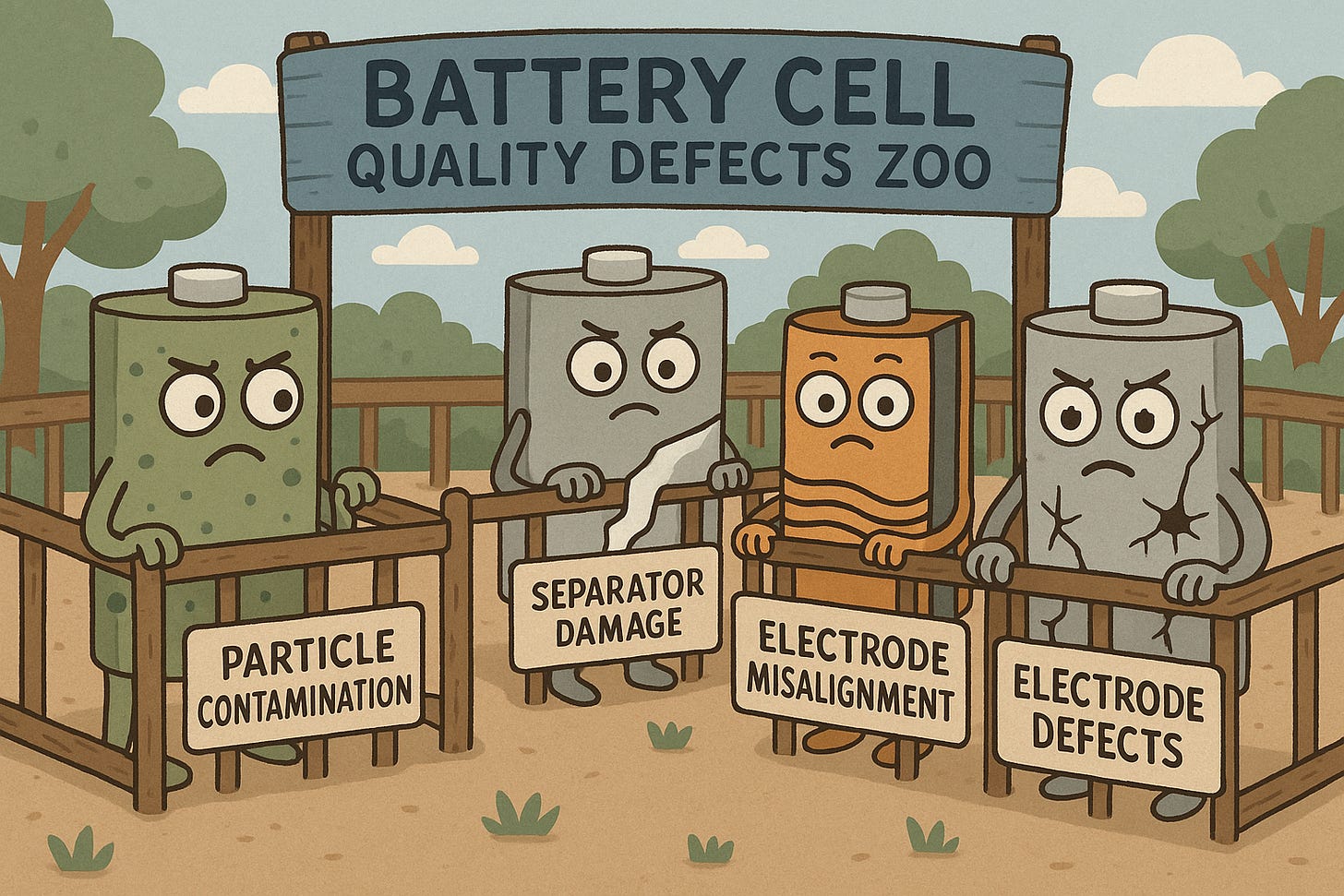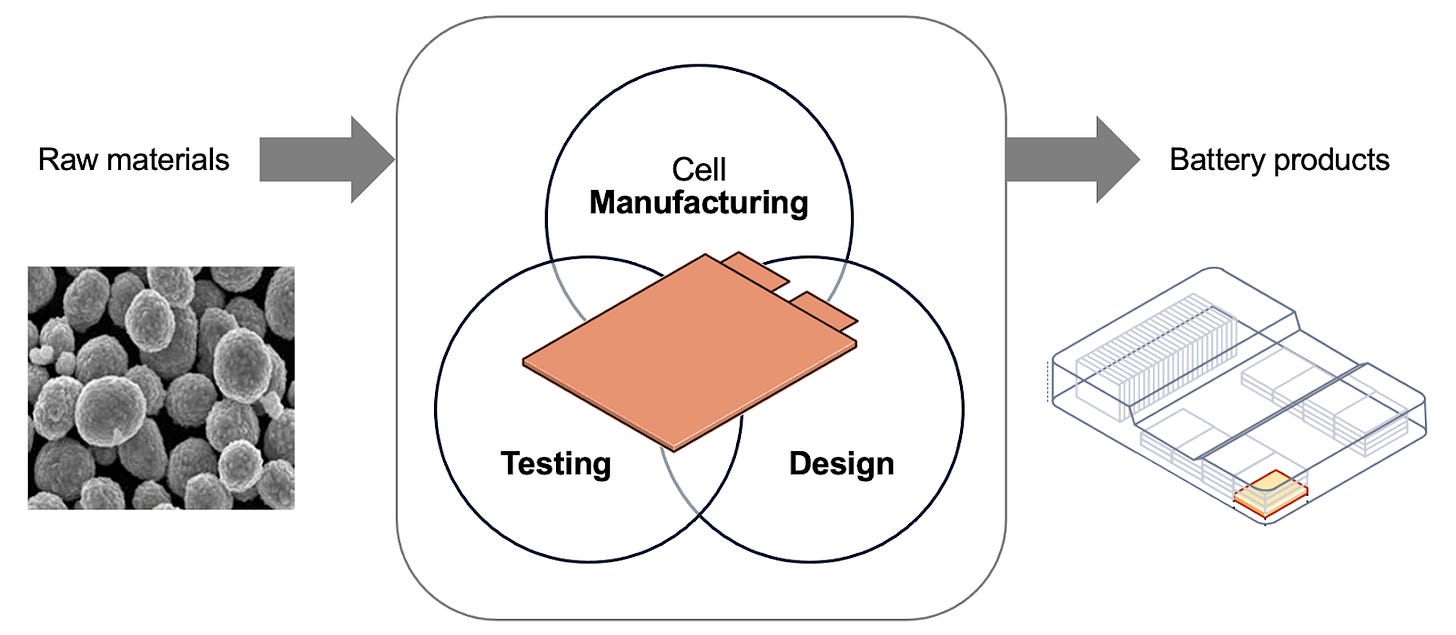Going from R&D settings to making full cells at scale is a challenge in both a technological sense but also in finding enough qualified and knowledgeable people.
An online course at the University of Michigan is trying to change that. We caught up with Andrew Weng, course lead, to get the low down on what such a course might achieve and why he thinks it’s needed.
Disclaimer: The author was a Tesla employee but no longer works there. The views expressed in the article are solely those of the author and do not represent the views and interests of Tesla.
When Elon announced that Tesla would begin developing its own battery cells in 2020, many on the cell engineering team felt two overriding emotions: exhilaration and concern. I was one of those engineers.
The exhilaration came from the promise of technology ownership. By designing and producing our own cells, we would control the fate of a core technology that enabled all of Tesla’s products, from our electric vehicles to stationary storage systems. It meant that we could realize cell design and materials optimizations beyond what our suppliers claimed was possible, the answer to which often changed depending on who we asked. Making the cells locally would also be more efficient: cells would no longer have to take cross-continental voyages before making it into our products.
The concern came from experience. Having already spent years working with our external suppliers, I saw how many things can go wrong in cell quality (you’ve never seen a bigger zoo) and how long the feedback cycles were in cell qualification (take a seat; it could be a while). It took legacy cell manufacturers decades to perfect their design, build out supply chains, and scale manufacturing processes. We didn’t have the luxury of time. Everything had to be done quickly and done right.
In short, when I learned of Elon’s decision to make our own cells, I thought, “This is really going to hurt. But if we succeed, it’s going to be epic!”
Fast-forward to today. I’ve been incredibly proud of the team’s accomplishments as they solved one production issue after another, scaled production volumes, and drove down costs. These engineers continue to be my role models for demonstrating the grit, teamwork, and systems thinking that enabled them to tackle some truly perplexing problems in cell manufacturing.
More recently, I’ve been spending more time thinking about how Tesla’s success can be replicated in the West. The battery ecosystem thrives when many players thrive, not just one. So far, Tesla is the only Western electric vehicle company that has climbed out of the valley of death. What gives?
While there is no singular explanation, I want to focus on one: education. Let me rewind a bit.
I worked at Tesla from 2013 to 2024. Throughout my time there, I remained a student, completing a master’s degree in computer science and a doctorate in mechanical engineering, focusing on battery manufacturing systems modeling. Being both a student and an engineer revealed a painful truth: today’s engineering education does not prepare students to solve real-world challenges in cell manufacturing.
Cell manufacturing challenges take a special degree of interdisciplinarity and systems thinking to grasp, let alone solve. This is true to some extent for all manufacturing processes, where final product performance reflects the sum of all upstream process parameters. Yet, cell manufacturing is uniquely hard because the complex electrochemical behavior of batteries evades simple descriptions that production often demands. Cell manufacturing process engineers are especially prone to “missing the forest for the trees” if they focus solely on optimizing their individual process step (e.g., slurry uniformity, electrode alignment) without the tools to consider the overall impact on cell electrochemical performance and lifetime.
Today, students can take courses in battery chemistry and materials, but these courses often focus on the electrode level and rarely treat battery cells as a system of interacting parts. Students can also take manufacturing classes, which will teach students how to use statistics to set process limits; yet, these courses won’t tell you how these limits affect cell performance.
To this day, very few university-level courses connect cell manufacturing process physics to cell electrochemical performance, which, to me, is at the core of solving industrial cell production scale-up issues.
Part of the problem is how academia is structured. Battery researchers are experts in individual battery components (e.g., cathodes, anodes, electrolytes) but few study battery cells as a system of interacting parts. Manufacturing researchers are experts in particular manufacturing technologies (e.g., additive manufacturing, welding, composite materials), but few study battery manufacturing as a system of interacting processes.
Without the right training in school, students need to take internships to obtain the relevant skills for landing their first job after graduation. Sometimes, multiple internships are needed. This system punishes students and employers alike. Internship opportunities are limited, leaving students without prior work experience stuck in a vicious cycle of “no job, no experience ↔ no experience, no job.” Employers also face a speed limit on how fast they can hire, since the pool of qualified candidates becomes constrained by the internship pool, and full-time conversions are delayed since interns first need to go back to school and complete their degree.
Many view training as something that “supports the growing battery industry.” I take a stronger view. When engineers don’t have adequate knowledge of the complexities of cell manufacturing, companies will not innovate quickly enough. Companies will fail.
Recognizing the training gap, I worked with the University of Michigan Electric Vehicle Center to build a battery manufacturing course from the ground up. The course connects first principles with factory realities. Rather than just describing process technologies available today, the course explains the foundational principles behind each process step, i.e., why they exist, what are the underlying physics, how defects emerge, and how decisions made early in the process propagate downstream. The course also describes the fundamentals of electrochemical characterization/testing and cell design, essential for enabling a systems-level view of cell production.
When we piloted the course earlier this year, 50 industry professionals from a major automotive OEM enrolled. Their feedback validated the need for this kind of integrative training. 98% said the course helped them learn the fundamental principles and theories of cell manufacturing. 91% said the course content could be directly applied to their work. Many learners highlighted the clarity of explanations, the value of real-world examples, and the unique balance of breadth and depth. One engineering manager said the course was instrumental to obtaining a complete picture of what their team was building.
I’m happy to share that the course is now open for public enrollment:
I view this course as one small contribution towards narrowing the battery manufacturing knowledge gap. More is needed. We must keep fostering partnerships across academia, industry, and government to develop educational resources that bridge the theoretical and the practical. We need institutions that treat battery manufacturing knowledge not as an afterthought to research but as a prerequisite for building a thriving battery industry.
When Tesla’s in-house battery program began, a common refrain I heard was “battery cell manufacturing is not in our DNA.” That’s probably true. So let’s evolve.
🌞 Thanks for reading!
📧 For tips, feedback, or inquiries - reach out
📣 For newsletter sponsorships - click here







I think one solution is for large US companies to work directly with universities so that you can work full-time at a battery-maker and get your Ph.D solving real-world problems instead of chasing academic trends.